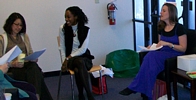|
|
 Acne (1,500) Acne (1,500)
 Addictions (1,500) Addictions (1,500)
 Advice (1,500) Advice (1,500)
 Allergies (1,092) Allergies (1,092)
 Alternative Medicine (1,500) Alternative Medicine (1,500)
 Anti Aging (1,500) Anti Aging (1,500)
 Breakup (1,500) Breakup (1,500)
 Cancer (1,499) Cancer (1,499)
 Dental Care (1,500) Dental Care (1,500)
 Disabilities (1,500) Disabilities (1,500)
 Divorce (1,500) Divorce (1,500)
 Elderly Care (1,498) Elderly Care (1,498)
 Goal Setting (1,500) Goal Setting (1,500)
 Hair Loss (1,500) Hair Loss (1,500)
 Health and Safety (1,497) Health and Safety (1,497)
 Hearing (1,500) Hearing (1,500)
 Law of Attraction (1,499) Law of Attraction (1,499)
 Marriage (1,500) Marriage (1,500)
 Medicine (1,497) Medicine (1,497)
 Meditation (1,499) Meditation (1,499)
 Men's Health (1,500) Men's Health (1,500)
 Mental Health (1,500) Mental Health (1,500)
 Motivational (1,500) Motivational (1,500)
 Nutrition (1,495) Nutrition (1,495)
 Personal Injury (1,499) Personal Injury (1,499)
 Plastic Surgeries (1,500) Plastic Surgeries (1,500)
 Pregnancy (1,496) Pregnancy (1,496)
 Psychology (1,500) Psychology (1,500)
 Public Speaking (1,500) Public Speaking (1,500)
 Quit Smoking (1,500) Quit Smoking (1,500)
 Religion (1,499) Religion (1,499)
 Self Help (1,500) Self Help (1,500)
 Skin Care (1,500) Skin Care (1,500)
 Sleep (1,500) Sleep (1,500)
 Stress Management (1,500) Stress Management (1,500)
 Teenagers (1,492) Teenagers (1,492)
 Time Management (1,500) Time Management (1,500)
 Weddings (1,500) Weddings (1,500)
 Wellness (1,500) Wellness (1,500)
 Women's Health (1,500) Women's Health (1,500)
 Women's Issues (1,500) Women's Issues (1,500)
|
In public speaking, it is common knowledge that your opening must grab the attention of your audience with your initial remarks. And, beginning your presentation with the words, "Today I'm going to talk to you about…." is not the way you do that. In fact, when I was teaching at both the college and graduate school levels, I would fail any student who opened his/her presentation with those words. Without a doubt, if you do not capture your audience with your opening, it is most unlikely that you will get them later when you are covering your major points – once lost, they are probably not going to be found! There are various types of openings which can you can use including jokes, true stories, questions or quoting someone else. Your goal is to say something that is thought-provoking, startling, humorous, interesting, joyful or even debatable. The lists in both cases go on and on. You are not limited in the manner in which you can begin. This type of opening which immediately involves your audience is known as casting the net or bringing them into the fold. Just remember to keep it simple. Your next step, however, is to retain your audience's attention throughout the rest of your presentation. A good way to do that is to give a true story, some form of anecdote, or some example for each point covered. Audiences love anecdotes because they can usually identify with you, the speaker, or with the individual or situation being discussed. In doing so, you are establishing your credibility. By building this type of rapport with your listeners, you are then able to move them and keep their attention as well. So now that you have grabbed your listeners and moved them during the heart of your presentation, what is the best way to close, thereby motivating or calling them to action? Very briefly recap your main points, mentioning what you are 'selling' and how they will benefit and learn more from your book or CD, your product or idea. Once finished, immediately begin walking towards the back of the room, acknowledging their applause. Your job is to be at the table where they can get more information or purchase your products as they exit. If you are able to grab them, move them, and then call them to action, you will see a tremendous increase in your success.
|
|
|



